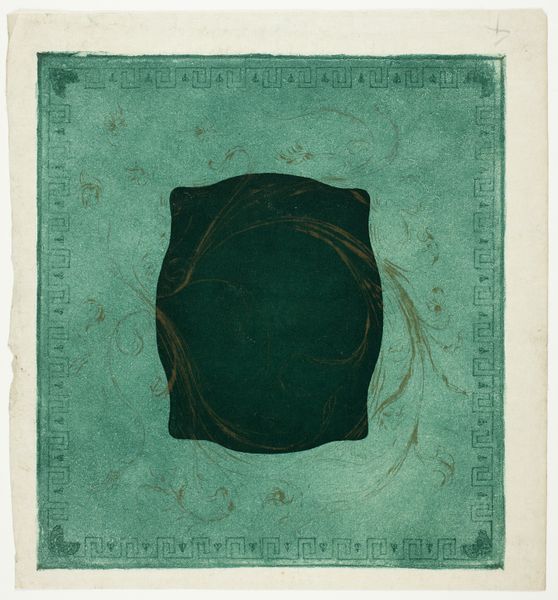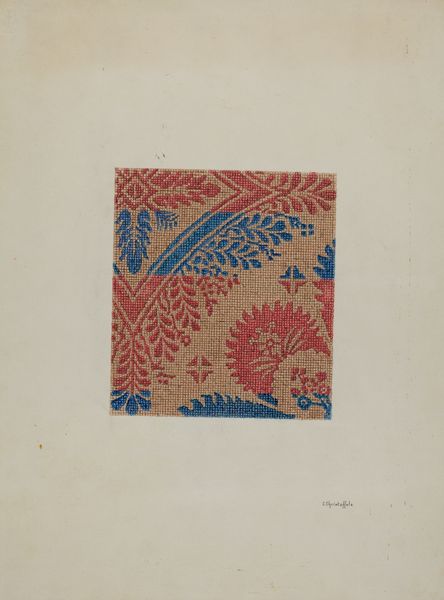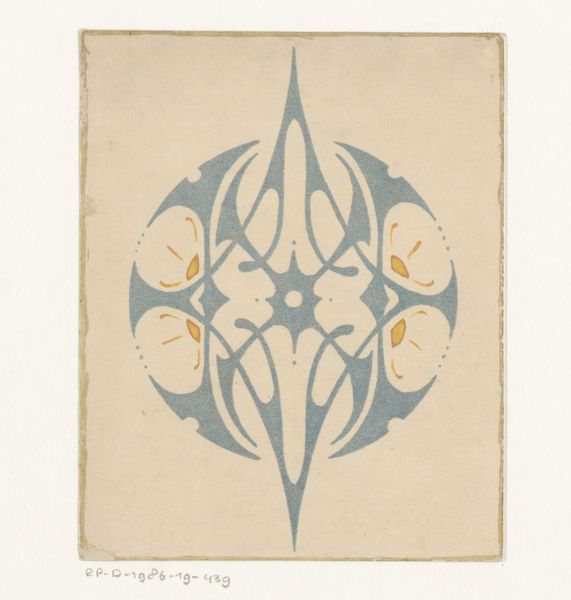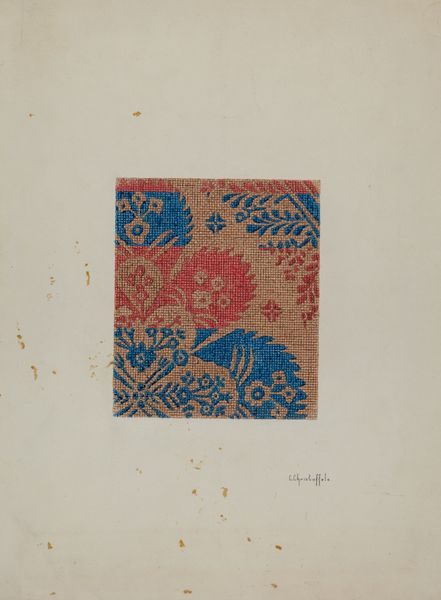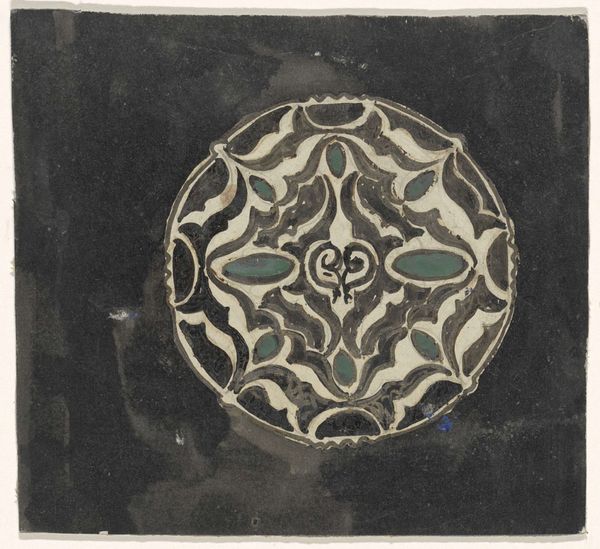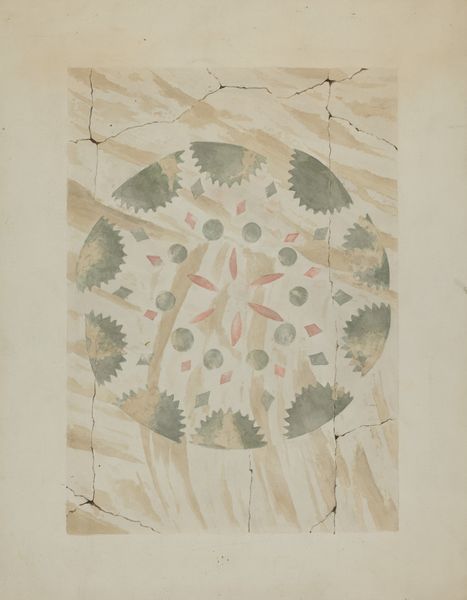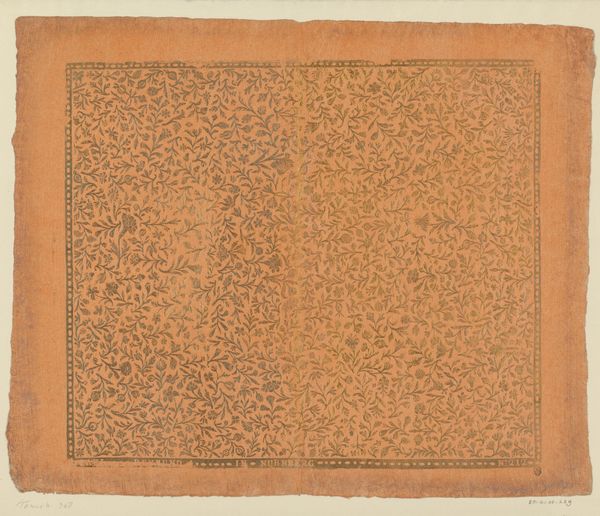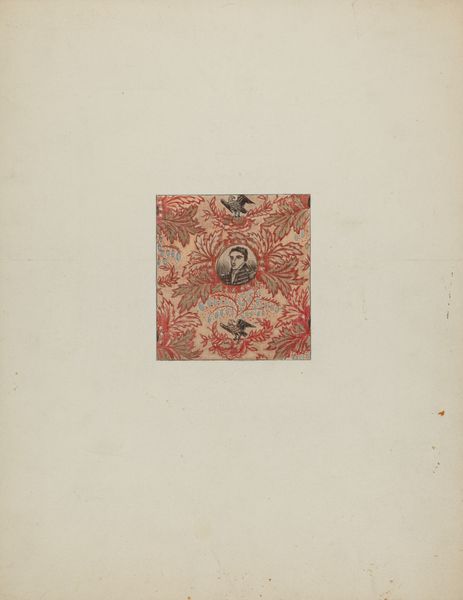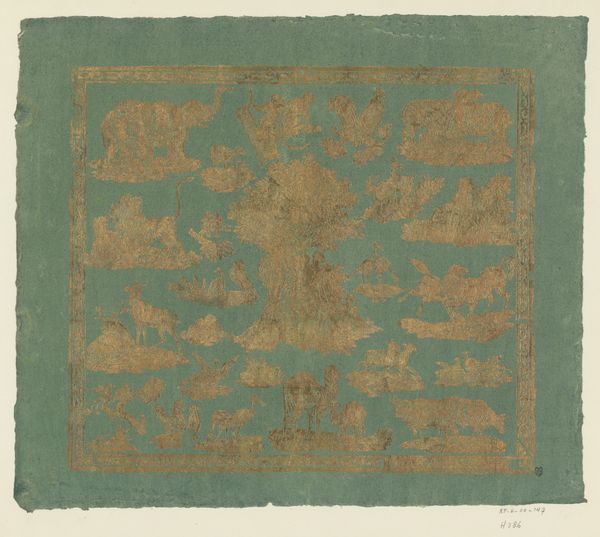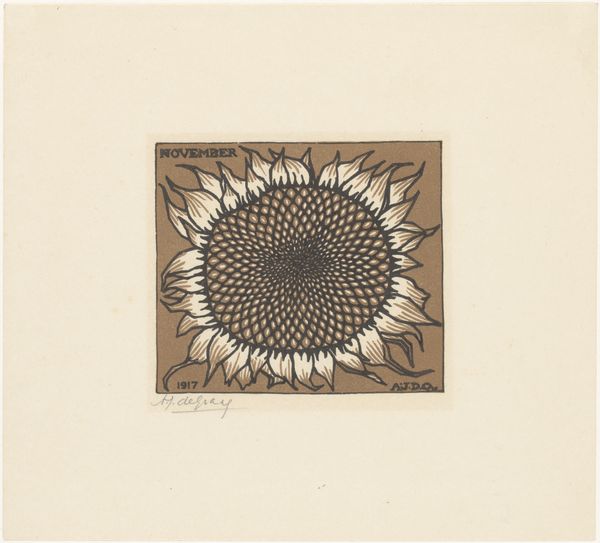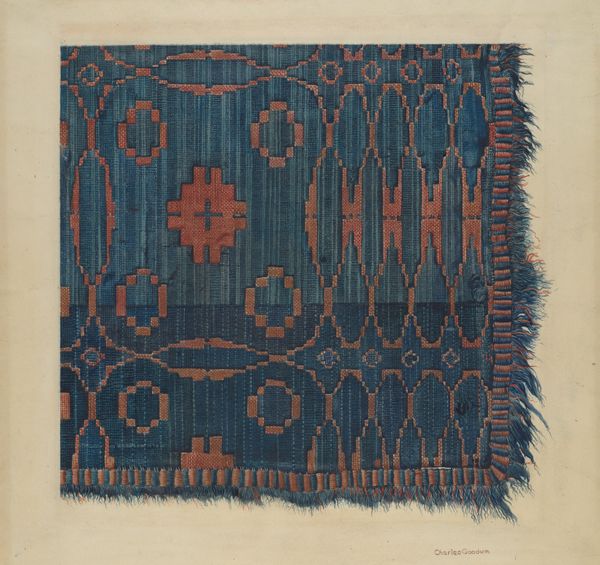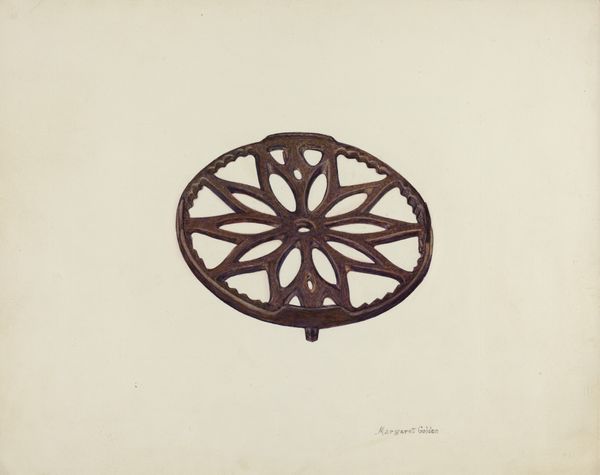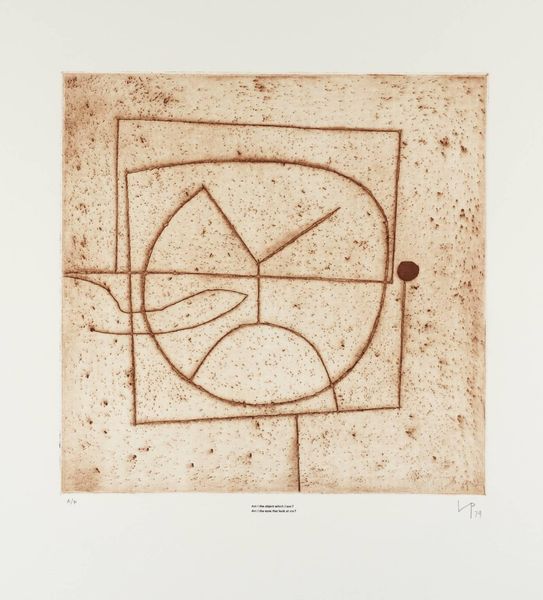
drawing, paper, watercolor, ink
#
drawing
#
paper
#
watercolor
#
ink
#
geometric
#
decorative-art
Dimensions: overall: 29 x 38.1 cm (11 7/16 x 15 in.)
Copyright: National Gallery of Art: CC0 1.0
Curator: What a fascinating piece. This is Angelo Bulone's "Zoar Fireplace Tile," created around 1938 using ink, watercolor, and drawing techniques on paper. It's striking, isn't it? Editor: It is. My first thought is how beautifully distressed the tile looks—the sort of perfectly aged patina that speaks of warmth and use. There's a stillness to it too. Curator: Absolutely. Bulone was part of the Zoarite community, a German Separatist group that established a communal village in Ohio in the early 19th century. He dedicated much of his art to preserving the village's legacy, including its distinctive material culture. Editor: So this rendering acts almost as an archive then, documenting their craft? How fascinating. You know, looking closer, I’m interested in the surface texture of the paper; how does it contribute to this feeling of authenticity? Was this an exact replica intended for mass production, or a handcrafted one-off? Curator: That's precisely the right question. Bulone meticulously rendered the tile’s surface—its imperfections, its discoloration. His choices in the medium demonstrate not only its look, but what I can imagine to be a tactile representation. Also, these representations of fireplace tiles served several functions: planning future ceramic production and creating archival documents when older tiles got broken. The visual record becomes crucial to community identity. Editor: So it served simultaneously as a record of the tile's production and material condition. Also, I'm looking at the sunburst pattern – almost floral, but rigidly geometric. Curator: Indeed, the convergence of natural motifs with that precise geometry seems characteristic of much decorative art from that time. Given that this was intended for the hearth, that design choice likely aimed to enhance a sense of warmth, community and spiritual symbolism during gatherings. Editor: Considering that function really shifts the lens; this tile image isn't just about replicating its source tile as a commodity object but rather reinforcing Zoar identity and ideals in their communal spaces. It’s almost as though the image operates as social cohesion. Curator: Exactly! Seeing the intersection of design, function, and collective meaning, especially rendered with such care. Now I wonder what future groups will preserve us through our communal art? Editor: Or what details, materials and techniques *they* might find particularly revealing. It's quite the thought to sit with, thank you.
Comments
No comments
Be the first to comment and join the conversation on the ultimate creative platform.
